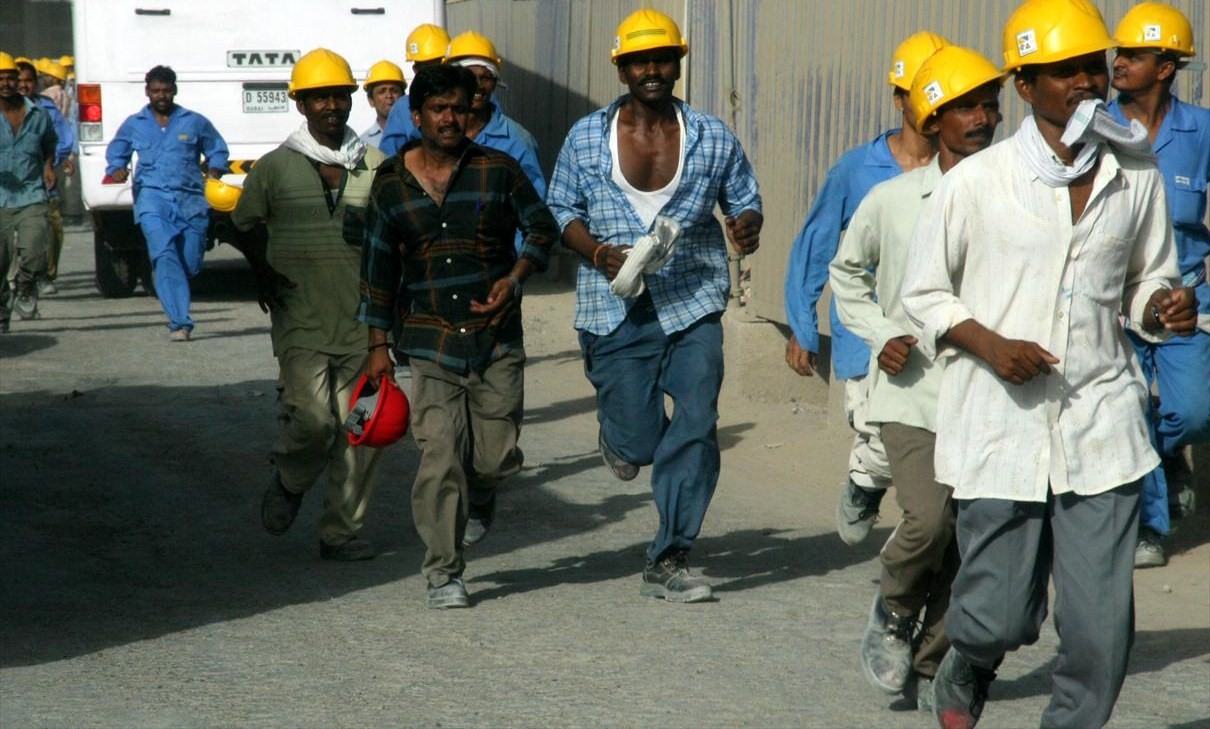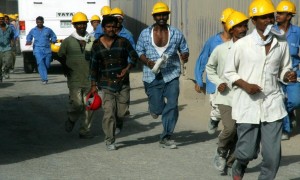This article is written by Narendra Mohan, a student of Faculty of Law, Lucknow University.
Introduction
Contract labour is a significant and growing form of employment. It exists in almost every sphere of the employment, industries, allied operations and also prevalent in the service sector. It generally refers to workers engaged by a contractor for other organisation. The exploitation of contract labour in employment is one the biggest concern of the government as the contract labour have little bargaining power, social security and often engaged in the hazardous industries with lesser facilities and security. To regulate this system the government enacted the Contract Labour (Regulation & Prohibition) Act, 1970 to secure the status of contract labourers and to abolish them from certain establishment and it came into force on 10.2.1971.
Registration
This Act made it obligatory for the establishment and industries to register before the concerned authority (Asst. Commissioner of Labour or Labour Officer) in a period as fixed by the government before employment of contract labour. All establishments and every contractor which employ or have employed more than 20 contract labours must register with the concerned authority. The application for registration by the principal employer (the person who actually employs) must contain various particulars in relation to the establishment and it shall be made in triplicate in Form-I to the registering officer of the area with appropriate fees as fixed by the government. The certificate of registration shall be granted mentioning the name and type of the establishment, type of business, maximum no. workmen to be employed as contract labour and other particulars in relation with the contract labour in Form-II. If there is any change in the particulars of the establishment, it must be informed to the authority within reasonable time.
Licensing of contractor
To secure the status of the contract labour the legislation made it mandatory for the contractor to obtain the license for the contract work from the licensing officer of the local labour department by applying in triplicate in Form-IV enclosed with Form-V of the principle employer by depositing the prescribed refundable security amount and the licensing fees. A license issued for one contractor work cannot be used for another work which is different in nature. A contractor is not able to engage in any work through contract labour with obtaining license from the licensing authority if it happens the penal action can be taken against the contractor accordingly. The license granted is valid for the period of 12 months and can be renewed.
Rights of labour
The act determines the rights of the contract labour so as to make them secure from any exploitation. These rights ensure equal status of them as of the workmen and the violation of which is enforceable in court of law. The interests of contract labour are protected in terms of wages, hours of work, welfare, health and social security. Any agreement made between the parties, which is inconsistent with the benefits provided under the Act and are not favorable for the labourers will be treated as invalid.
- The contract labours are entitled for the wages including overtime wages and allowances as stipulated for their work at the establishment. It must be paid without delay whenever the wage period is over. It must be in accordance with the Minimum Wages act.
- The contract labours have also the right to be provided the safety measures at the establishment and immediate health service in case of any injury to the labour. They are entitled for facilities like rest rooms, canteens, washing facility, first aid facilities and many more. The women labours are entitled for the separate washrooms, restrooms.
- They are entitled not be employed in any work which is prohibited under any law.
Responsibility of principal employer
Responsibility of principle employer is on priority as he is the person who is connected with the contract labour at work, therefore every facility and security at work must be provided to him by the principal employer. Although his liability for the contract labour is secondary after the contractor yet he is principal in payment of wages and providing the facilities and security at workplace.
- The employer is responsible for obtaining the certificate of registration and must comply with all the necessary provisions for registration of the establishment and furnish all the particulars as demanded by the authority at times.
- The principal employer must maintain a register of contractors in Form – XII.
- The principal employer is responsible for payment of wages including overtime wage and allowances directly paid to the labour in full in accordance with Payment of Wages Act, 1936 in case the contractor fails to make payment within the prescribed time. The principal employer may recover such amount from the contractor. A representative of the principal employer must be present while the wages are paid to the contractor.
- He is also responsible for various facilities which are to be provided at work and which are essential for the contract labour at work. The principal employer is entitled to recover from the contractor any amount spent on providing such facilities to the contract labourers.
- He is responsible that any contract labour must not engage in hazardous or such work which can cause him the injury at work.
- He is also responsible for sending Annual Report in a Form XXV to the Registering Officer within 15th February of every year.
Responsibility of contractor
In the contract labour system, the contractor is most responsible person towards the contract labour. His liability under the act is made primary. In case of every situation related with the contract labour, the contractor is responsible.
- The contractor is responsible to obtain the license from the licensing authority and furnish to them all the particulars and documents as are necessary for the license.
- He is responsible to maintain the register of workers in Form XIII which shall contain all necessary particulars related with each contract labour.
- The contractor must issue an employment card to each of the workers.
- All facilities and amenities like stay rooms, re st rooms, washrooms, food, and health facility are to be provided by the contractor.
- He is primarily responsible for the disbursement of wages to the labours on time and maintains necessary Register of Wages, Deductions, Overtime, display an abstract of this Act in English, Hindi and in a local language, and notices related to rate of wages, period of work, address of labour inspector, etc.
- The contractor must send Half-yearly reports in Form XXIV to the local labour department in December and June.
Judicial interpretation on abolition and absorption
There are number of judgments in which the court delivered its opinion in relation to the status of contract labour being abolished under the notification as it is one of the disputed social issues in relation to government reforms. Therefore every time the judiciary is more conscious to determine the status and security to be provided for such type of labour and to ensure that they won’t be exploited by the industrial class of the society.
- In Gammon India Ltd. vs. Union of India 1974 SCC (L&S) 252 numerous provisions and rules under the contract labour act, 1970 were interpreted by the judiciary broadly. Various facilities, wage payment manner, duty of contractor and principal employer were broadly interpreted. Also this case defined the constitutional validity of the contract labour statute as constitutionally valid.
- In Deena Nath case AIR 1991 SC 3026, Supreme Court held that the principal employer cannot be required to absorb the contract labour which is abolished.
- But after that there were constant complaints that the contract labours are being thrown out from the employment. So the questions arose as to the status of abolished labour under the act. On this crucial question of the after effect of the abolition of contract labour, the Supreme Court in Air India Statutory Corporation vs. United Labour union AIR 1997 SC 645, overruled the two member bench decision in Deena Nath Case AIR 1991 SC 3026 holding that the high court may direct the principal employer to absorb the contract labour who have been abolished under the government notification. The court also ruled that the linkage between the contractor and the labour stood snapped and the direct relationship stood restored between the principal employer and contract labour as its employees.
- Later in the landmark case namely Steel Authority of India vs. National union of Water Front workers and others, AIR 2001 SC 3527, the Supreme Court overruled the decision delivered in the Air India Statutory Corporation Case holding hat neither section 10 of the act nor any other provision of the act whether expressly or by necessary implications provides for the automatic absorption of the contract labour. Consequently the principal employer cannot be required to absorb the contract labour working in the establishment.
Obligation and manner of payment of wages
The contractor is obliged to pay the wages of the contract labour at the prescribed period of time. The contractor shall fix wage periods in respect of which wages shall be payable. No wage period shall exceed one month. The wages of every person employed as contract labour in an establishment or by a contractor where less than one thousand such persons are employed shall be paid before the expiry of the seventh day and in other cases before the expiry of tenth day after the last day of the wage period in respect of which the wages are payable. Where the employment of any worker is terminated by or on behalf of the contractor the wages earned by him shall be paid before the expiry of the second working day from the day on which his employment is terminated. All payments of wages-shall be made on a working day of the work premises and during the working time and on a date notified in advance and in case the work is completed before the expiry of the wage period, final payment shall be made within 48 hours of the last working day. Wages shall be paid without any deductions or any kind except those specified by the Central Government by general or special order in this behalf or permissible under the Payment of Wages Act, 1936. A notice showing the wage-period and the place and/time of disbursement of wages shall be displayed at the place of work. The principal employer shall ensure the presence of his authorized representative at the place and time of disbursement of wages by the contractor to workmen and it shall be the duty of the contractor to ensure the disbursement of wages in the presence of such authorized representative.
Penalties
The act penalises the contractor, principal employer or any other person if he contravenes the provisions of the Act. The punishment in most of the offences is imprisonment for a term upto 3 months or fine upto Rs 1000/- or both and in case of continuing offence, an additional Rs 100/- per day.
The act also provides for the penalty if any person obstructs or make disturbance in inspection made by the inspector or refuses to furnish any documents, approvals or register as demanded, the punishment for these kind of offences will be the imprisonment for a term upto 3 months and fine upto Rs 500/- or both.
Photo Credits: Imre Solt
 Serato DJ Crack 2025Serato DJ PRO Crack
Serato DJ Crack 2025Serato DJ PRO Crack











 Allow notifications
Allow notifications



